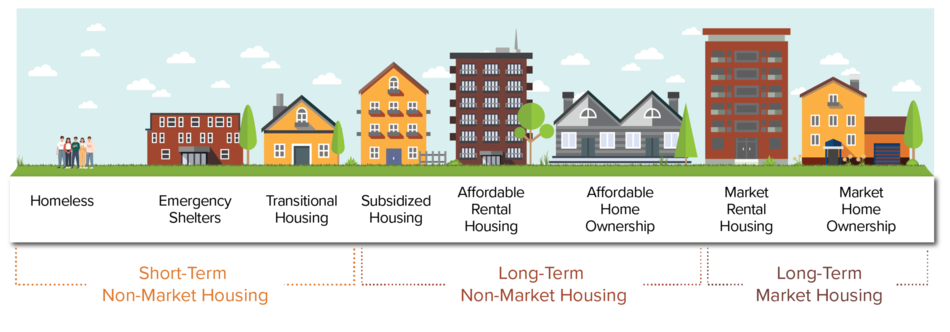Project Overview
Housing and community development in Drumheller Valley present unique and complex needs. The Town of Drumheller’s population has been relatively stable throughout the last five years, with the 2021 census data showing a population of approximately 7,900 residents. The large majority of Drumhellerites live in residential neighbourhoods made up of predominantly single-detached homes; however, there is an increasing need for alternative housing forms, tenures (i.e., ownership and rental), and affordability levels to better meet the diverse and changing needs of current and future residents.
Town Council and Administration have identified three key areas of interest in the development of a Housing Strategy:
- Inventory mix,
- Rental unit availability, and
- Affordability.
Providing a mixture of housing types and tenures of varying levels of affordability is essential for creating a diverse, inclusive, and healthy community. Drumheller’s population is also aging. It is anticipated that by 2036, 2,300 residents of Drumheller will be over the age of 65. An aging population creates an increased need for affordable, age-friendly accommodation to promote aging-in-place in the community.
This project is made possible through a grant from the Alberta Real Estate Foundation.
What is a Housing Strategy?

There are two parts to the Housing Strategy. The first part is completing a community profile and housing needs assessment to better understand the current housing situation in the Drumheller Valley. The community profile and housing needs assessment includes information such as:
- Community demographics
- Current housing supply and demand, including range of housing options
- Condition of existing housing
- Rental vacancy rates
- Affordability
- What gaps exist in the housing market and opportunities to fill those needs
- Future housing need
Current and future housing needs, gaps, and future priorities are explored across the full housing continuum, as shown above.
The second part is the housing strategy itself, which provides a road map to help the Town and all community partners create and maintain an affordable, safe, and suitable supply of housing. The strategy does:
- Determine the affordable housing gap, identify current barriers for residents to access and keep a home that meets their needs, define the key housing issues, and prioritize actions to best address the key issues;
- Build on existing housing data to create recommendations;
- Include policies, strategies, and approaches to address housing issues;
- Explore opportunities for partnerships and confirm specific roles of key stakeholders and agencies; and
- Recommend an implementation plan with short- and long-term goals and performance indicators to measure success.
Both parts of the project involved engagement with the local community and stakeholders.
